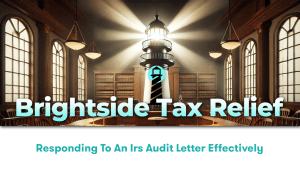Did you know that you have to pay taxes even if you’re unemployed? In fact, many Americans who took out unemployment during COVID-19 lockdowns may now find themselves with large tax bills.
But how do unemployment taxes work? Are there any avenues for unemployment tax help?
Read this guide to learn more about everything from unemployment benefits to tips on how to deal with unemployment taxes.
How Are Unemployment Benefits Taxed?
The Internal Revenue Service (IRS) considers unemployment benefits to be a source of taxable income. Since they are replacing a portion of your wages, the IRS views them the same as any other source of income. This means you’ll have to pay the traditional tax rate.
This tax rate will depend on your overall financial situation. Your tax bracket, tax debt, and other factors about your tax situation will all go into play to determine how much, if anything, you’ll need to pay.
You should receive a 1099-G form from the state which paid your unemployment benefits. This form will tell you how much you received in unemployment. It will also tell you how much will you’ll need to withhold for taxes.
Though there was an unemployment tax break in 2020, this no longer applies. You can expect your entire benefit amount to be viewed as taxable income in 2021 and beyond.
How to Pay Unemployment Taxes
The easiest way to pay unemployment taxes is to have a portion of your check withheld by the federal government each week. You’ll need to file form W-4V to have these taxes withheld. You can file this form with your state unemployment office.
If you choose this option, the state will withhold 10% of each monthly payment for tax purposes. They will not withhold any other amount or percentage.
However, this option may not work for everyone. You can also choose to have taxes taken out on a quarterly basis.
To do this, you can send a check along with Form 1040-ES. You can also pay online at the IRS Direct Pay portal. Payments will be made four times a year, generally on these dates:
- April 15
- June 15
- September 15
- January 15 of next year
This option can be a bit difficult for many people though. You’ll have to use tax software or help from a professional to determine how much you owe each quarter. There is also a worksheet that comes with Form 1040-ES that may be helpful for calculations.
Your final option is to wait until the traditional annual tax season to see how much you’ll owe. This can be a bit of a risky option, however, because you could be left with a large tax bill and penalties for underpayments.
Paying your taxes in one lump sum can also leave you vulnerable to liability.
What Is a Tax Liability?
Tax liabilities are amounts of money you owe to a government entity. This can be a government entity on any level, including local, state, and federal. In most cases, tax liability will refer to federal taxes.
Total tax liability includes everything from income taxes to penalties and interest. This can also include taxes from previous years that you have not yet paid.
Yes, this means that taxes can accumulate debt. It is best to avoid tax debt, as it can be difficult to pay off and leave you vulnerable to legal consequences.
You can determine your tax liability by reviewing pay stubs, unemployment benefits, and any self-earned income from the year. You’ll have to be careful when estimating your tax rate.
Whether you pay weekly, quarterly, or annually, your general goal should be not to underpay or overpay the IRS come tax time.
How to Pay Unemployment Taxes if You Have a Liability
If you expect that you may owe more than you can reasonably pay come tax time, you have a few options.
To start, you can contact the IRS to discuss setting up an installment plan. This allows you to break up the payment into reasonable monthly chunks until the amount is paid in full.
You can also work with a professional financial or tax advisor to learn the best way to structure your budget and income. An attorney specializing in taxes can also help you explore your legal options.
Navigating State Income Taxes
Some states also require that you pay state income taxes on your unemployment benefits. This is in addition to your federal income tax requirements.
This can be difficult to navigate. Every state has its own tax rate and rules. For example, some states will tax the full unemployment amount, some don’t tax unemployment, and some don’t have state-level income taxes at all.
The states that do not have state income tax at all include:
- Alaska
- Florida
- Nevada
- South Dakota
- Tennessee
- Texas
- Washington
- Wyoming
If you live in one of these states, you won’t need to worry about paying state-level income taxes. New Hampshire residents are also in the clear. New Hampshire only requires state income tax on money earned through interest and dividends.
You also won’t have to worry about paying income taxes on unemployment in these states:
- California
- New Jersey
- Pennsylvania
- Virginia
These states do not tax unemployment benefits. In all other states, as well as the District of Columbia, you’ll have to review the tax rate to determine how much you’ll owe. A tax advisor can help you.
Simplify Tax Season With the Help of the Pros
Now that you know more about unemployment taxes, you can more easily determine whether you need help with taxes and filing. Tax season can be difficult, but with the right help, you can save yourself money and time.
Contact our office to schedule tax help. We’ll discuss your tax situation to make sure you get the help you need.




